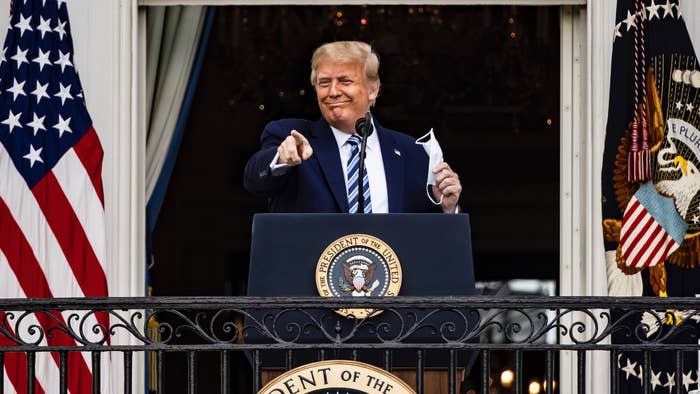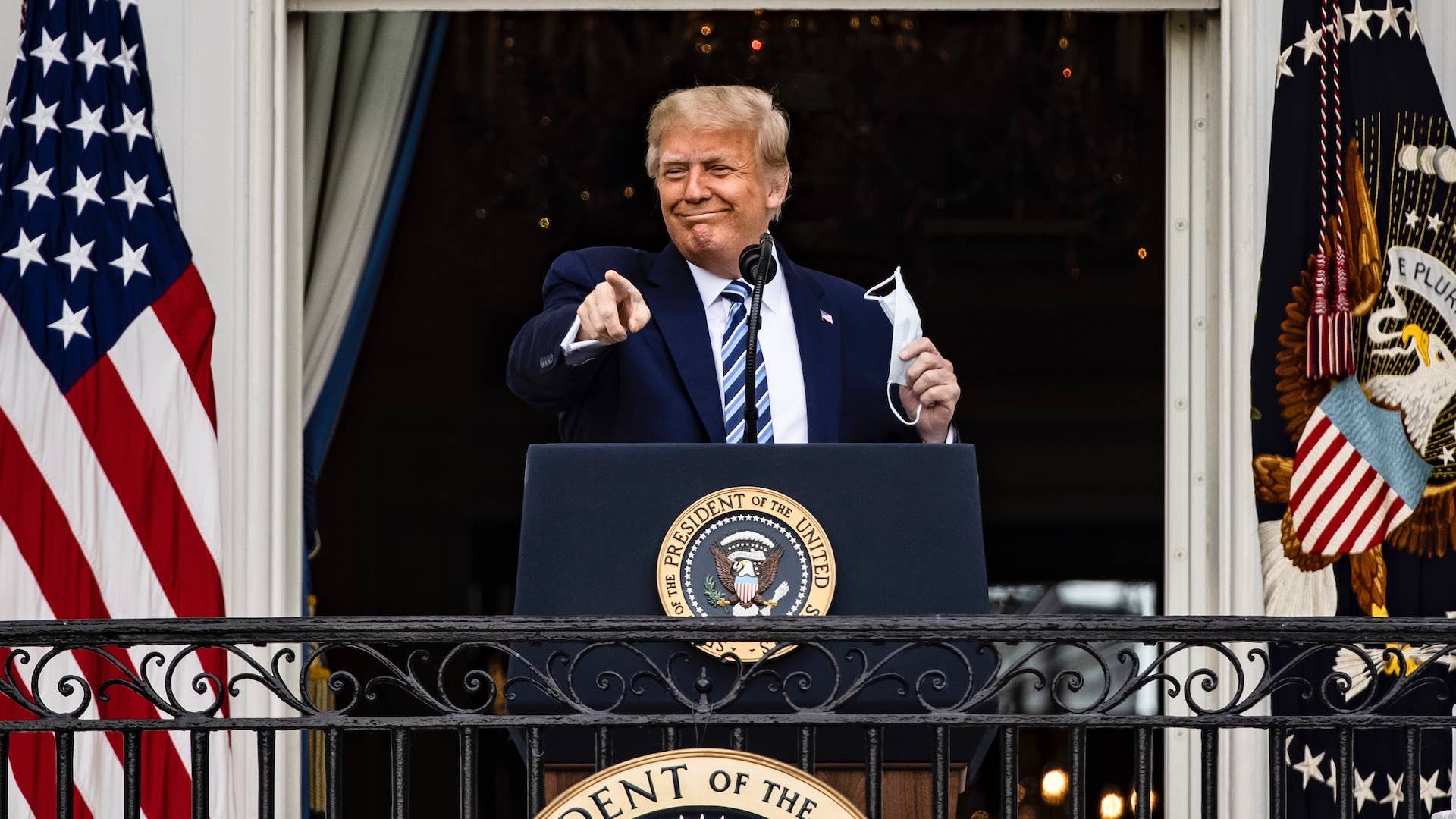
Donald Trump is known for attention-grabbing stunts, which is why this latest New York Times report is so believable.
Sources tell the publication that during his recent stay at Walter Reed Medical Center, the president began floating a bizarre and juvenile plan for his first public appearance. According to the Times, Trump wanted to address the nation by initially appearing frail and weak, only to rip open his button-down shirt moments later to reveal a Superman tee underneath. The purported plan sounds stupid, egoistical, and very on brand.
Obviously, Trump never followed through with the idea, which would've undoubtedly dominated the news cycle for at least a day. However, the Times report has generated a decent amount of conversation on social media. You can read a few of the reactions below.
The report comes a little over a week after Trump announced he and first lady Melania Trump had tested positive for coronavirus. He was admitted to Walter Reed shortly after and was released on Monday. Since then, there have been many questions surrounding the president's current condition, as his doctors initially refused to say when he last tested negative.
On Saturday night, White House physician Dr. Sean Conley released a memo stating Trump no longer posed a COVID-19 transmission risk.
The memo, published by the Times, reads in part:
This evening I am happy to report that in addition to the president meeting CDC criteria for the safe discontinuation of isolation, this morning’s COVID PCR sample demonstrates, by currently recognized standards, he is no longer considered a transmission risk to others. Now at day 10 from symptoms onset, fever-free for well over 24 hours and all symptoms improved, the assortment of advanced diagnostic tests obtained reveal there is no longer evidence of actively replicating virus. In addition, sequential testing throughout his illness has demonstrated decreasing viral loads that correlate with increasing cycle threshold times, as well as decreasing and now undetectable subgenomic mRNA.

